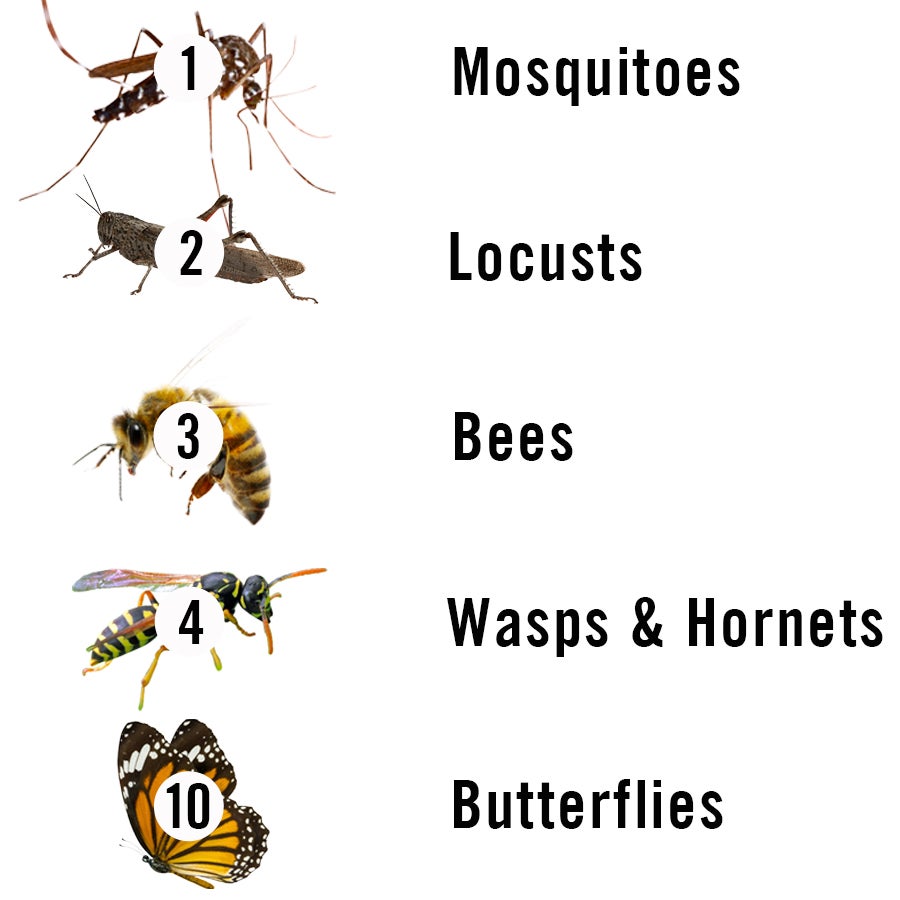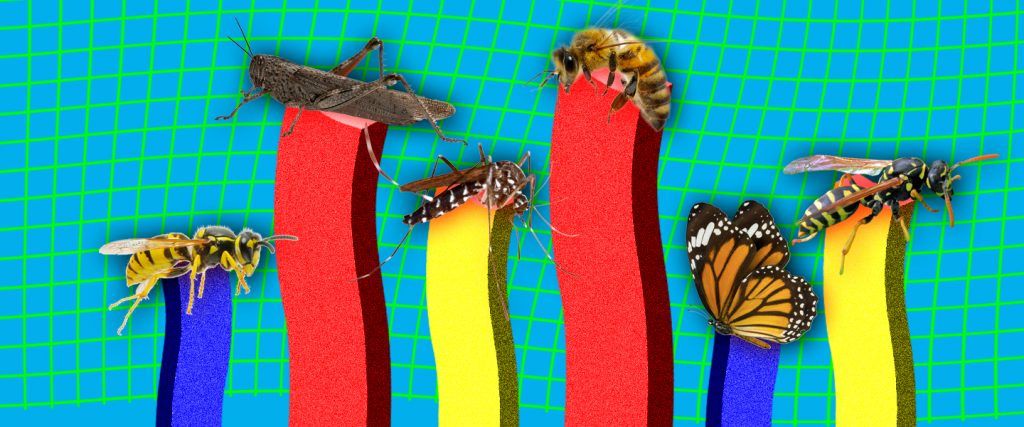In November, hundreds — maybe thousands — of pissed-off scorpions, forced out of their burrows by heavy rain, stormed the southern Egyptian province of Aswan and stung 503 people (if only Brendan Fraser was there to protect them). It was an emphatically frightening experience for everyone involved, but thankfully, all of those impacted were treated with anti-venom and survived the ordeal.
I can’t help but imagine, though, how things would have turned out if a different insect had attacked. What if it were a swarm of bees, mosquitos or ants? Which bug is the deadliest in large numbers, anyway?
To entertain my theoretical, I reached out to Alec Gerry, professor of entomology at the University of California, Riverside, and asked him to help me rank swarms of creepy-crawlies by how dangerous they are — from harmless to purely murderous. Keep in mind, however, that Gerry says, the term “swarm” most often refers to the “aggressive massing of honeybees.” As such, many of the bugs listed below don’t necessarily engage in “swarm” behavior, and thus, our ranking is largely theoretical.

10) Butterflies: Beautiful as they can be, some butterflies are poisonous. Still, that’s only a concern if you were to eat them. Therefore, unless you’re one to walk around with your mouth wide open, a swarm of butterflies would be entirely inoffensive.
9) Cockroaches: Roaches may be persistent, but they’re not all that dangerous, even en masse. “People can develop allergies to them,” Gerry notes. However, that can be easily managed with an over-the-counter antihistamine or decongestant. It’s also possible for cockroaches to scratch you with their heavy leg spines, but I trust in your ability to smash them before that happens.
8) Spiders: Most spiders are solitary animals, so it’s entirely unlikely that you’d ever run into a spider swarm (unless you happen to come upon the hellish spilling out of babies that happens when spider eggs hatch). For the same reason, it’s also uncommon for an unprovoked spider to bite, and while there are venomous ones, they don’t kill many people: According to a study, only 11 Americans died each year due to spider bites between 2008 and 2015. That said, in the U.S. at least, you should still watch out for black widows and brown recluses, which can be deadly. Otherwise, the vast majority of spiders look more dangerous than they actually are.
7) Ants: Some ants wield deadly poisons, and while they may bite or sting you if you were to stand on an anthill, Gerry says “small animals that are incapable of fleeing” are more of a target than humans who can simply walk away. If you were to get stung by a few hundred toxic Maricopa harvester ants, you’d be in trouble, but you’d have to be passed out drunk on a colony for that to happen.
6) Scorpions: It’s been estimated that scorpion stings lead to more than 3,250 deaths per year, so they’re definitely not an innocuous bug. However, as the situation in Egypt shows, medicine is an effective solution. Furthermore, scorpions may be sneaky, but they’re also slow. That means you should be able to escape a swarm if you see it coming.
5) Wasps and Hornets (tied): These stinging insects (especially the so-called Murder Hornet) have a bad reputation. Gerry is sure to clarify, though: “Wasps and hornets will defend their nest if it’s disturbed, but they don’t swarm like bees.” That’s not to say they’re harmless — in Japan, wasps are deadlier than bears — but it’s not likely for them to form a buzzing mob and come after you out of nowhere.
3) Bees: Unlike wasps and hornets, bees will come after you en masse. “A bee that stings will release an odor that calls other bees to attack,” Gerry says. “Bees do indeed kill many people each year due to the anaphylaxis response of some people who are severely allergic to bee toxins.” They’re also fast flyers, which makes them incredibly tough to run away from. In fact, bees are considered to be the most lethal animal in America.
2) Locusts: A swarm of locusts isn’t deadly in the traditional sense: They won’t bite or sting. They will, however, eat all of our crops, which could be a big problem. In 2020, a year of multiplying locusts, the U.N. Food and Agriculture Organization said the bugs may pose a threat to the livelihoods of 10 percent of the world’s population. According to them, a locust horde can consume enough food to feed 35,000 people (or six elephants) in a single day.
1) Mosquitoes: Over one million people die from mosquito-borne diseases every year, so they’re undoubtedly the most dangerous insect. In short, they suck — literally and figuratively — and sometimes actually swarm. “The males, which don’t bite, will form swarms for mating,” says Gerry. “Female mosquitoes then fly into the male swarm, where they’re captured and mated by a male.” This, of course, results in even more mosquitoes, which is the last thing we need.
Well, there you have it. I’m just gonna go burn the world down really quickly.

